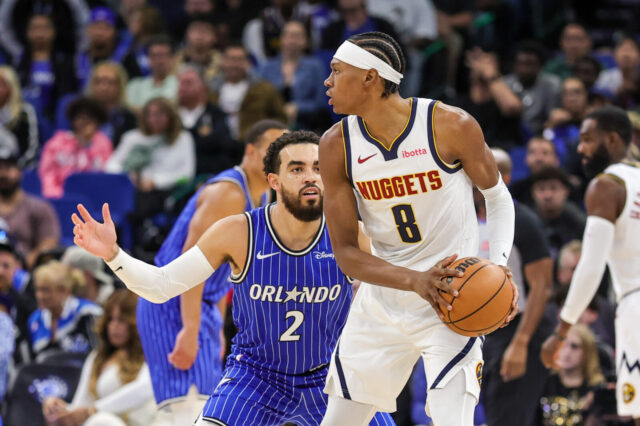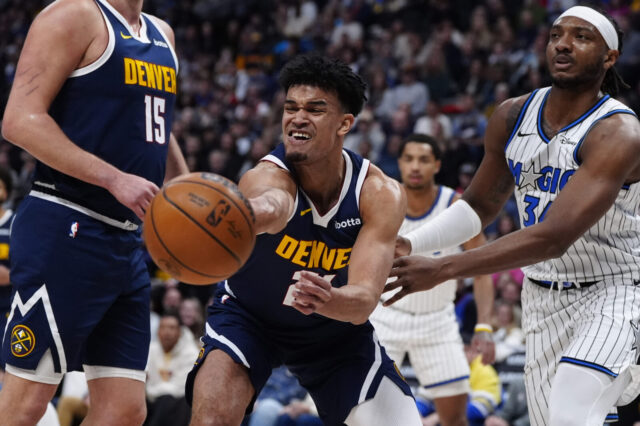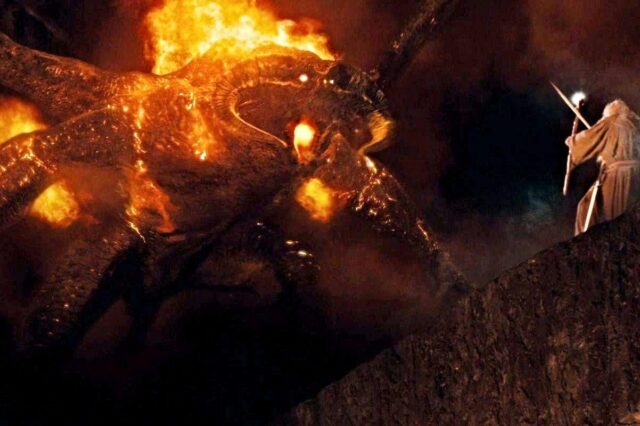I still remember when it happened to me.
I was having a decent night on the basketball floor. Making my layups. Getting my teammates involved in the game. Blocking some shots. Just a regular outing in my regular Wednesday night pickup basketball game with a group of friends I'd been playing with for nearly 10 years.
Then it happened.
I received a pass just inside the top of the key, facing out towards the three-point line with my back to the basket, and had my little brother guarding me. Knowing my brother was backing off on me a bit, I made up my mind to turn left and attempt a jump hook with my right hand.
The problem was, when I turned left my right knee didn't come with me.
As if my right foot had been cemented into the basketball floor, when I turned left to attempt that jump hook every part of my body rotated leftward … except that right foot. And thus, my right knee snapped in a way I had never felt before, sending me straight onto the floor, crippling in pain.
With my adrenaline kicking in, I was somehow able to get up and hobble about a bit. Thinking "It's just a sprain, it's just sprain" I even tried to shoot a few shots on one of the side rims, hoping to warm my knee back up again. But it just didn't feel right.
Able to drive home, as soon as I entered the house the adrenaline wore off and I was in a desperate amount of pain. I called a good friend who's a prominent orthopedic surgeon – who specializes in knees – and told him what happened. "Whether you sprained it or tore your ACL, there's no point in going to the emergency room. Get some Vicodin, ice it and see a knee doctor tomorrow," he told me. Luckily a friend had just had knee surgery himself and had some extra Vicodin for me, which helped ease the pain and get me through the night.
From there, an exhaustive, seemingly endless rehab process began. After seeing a knee specialist in Los Angeles (who actually works on the US Soccer Team), it was quickly determined that I torn both my ACL and meniscus. And that if I was to ever play sports again, surgery and full rehab was mandatory. That meant surgery, rehab, inconveniencing everyone in my life, rehab, ice machines, crutches, rehab, inconveniencing everyone in my life, rehab, more rehab and so on.
But I did it. A couple weeks after the surgery, I was able to ride a stationary bike gingerly. A week or so later I was able to ride the bike for one hour a day. Then two (my physical therapist mandated two hours of stationary biking per day … plus physical therapy!).
And many many many months and nearly $10,000 (and I have health insurance) and countless hours of rehab later, I was back to running, jumping and eventually, skiing. Not wanting to go through that again, I stopped playing basketball altogether. But in basketball's wake, I've taken up CrossFit where I train at least four days a week. And even though I'm one of the oldest, weakest and slowest people at our gym, I'm in the best shape of my life and am yet to experience any knee pain whatsoever. Moreover, it's amazing how many fellow CrossFitters have also experienced ACL and meniscus tears themselves and are able to complete all the workouts without knee issues.
The point of all this is to simply state that I can relate to what Nuggets small forward Danilo Gallinari – who came tumbling down when he tore his ACL in a game against the Mavericks last Thursday – is about to go through. (Interestingly, when I tore my ACL I was wearing Adidas sneakers just as Gallo was … and so was Derrick Rose when he tore his ACL last year. I’m just sayin’ …) And I can tell Gallo – and all of you – that if he puts in the work, Gallo will come back even stronger and the Nuggets will be better for it.
Recent NBA history has ample examples of players coming back stronger and better after tearing an ACL. Last year, Bleacher Report’s Lindsey Young did a great job of listing names of productive, impact players who have come back better post-ACL surgery, including Al Harrington, Al Jefferson, Baron Davis, David West, Jamal Crawford, Kyle Lowry, Jason Smith and Kendrick Perkins. Even the Nuggets own Corey Brewer has been better since tearing his ACL in 2008. And this season, Timberwolves point guard Ricky Rubio is the latest example of a player who has come back fully from this miserable injury.
And there's no sugarcoating it – tearing one's ACL is a miserable injury (just ask Rose who is yet to get back onto an NBA floor). But it's by no means a career-ending injury, just a long-rehab injury.
And it's during that long rehab for Gallo that his teammates must – and I believe will – step up their production.
Fortunately or unfortunately, with Gallo being injury prone the Nuggets have learned to win games without him (notably against the Lakers at home, in Portland and against the Mavericks Thursday). Moreover, no challenge seems too great for the 2012-13 Nuggets to overcome. Already sitting (impressively) with 52 wins, the Nuggets got there despite injuries to Wilson Chandler, Ty Lawson, Gallo and one of the most difficult regular season schedules in NBA history. (The Nuggets schedule might seem somewhat easy recently, but lest we forget the grueling early schedule with multiple road and back-to-back games and the Nuggets facing one of the toughest no-rest versus rest schedules among all NBA teams this season.)
In Gallo’s absence, look for Chandler to get more minutes and reward head coach George Karl with more scoring and rebounding. Many who follow the Nuggets closely believe Chandler is actually better than Gallo, but I don’t want my friend and colleague Jeff Morton to get any more depressed than he already is.
And for those of us (me included) that cringed all season long when Karl played his two point guard lineup of Lawson and Andre Miller, I think we’re going to be grateful that Karl did so now that Gallo is out. Now, Karl can play the two point guards and move Andre Iguodala to small forward to spell Chandler. And we recently discussed Brewer’s vast improvement this year and I think all Nuggets fans now feel comfortable with Brewer on the floor.
In addition to having Iguodala, Chandler and Brewer to make up for Gallo’s production, French rookie Evan Fournier has proved not to be “an international disaster” that some worried he might be when the Nuggets nabbed him on draft night last summer. The 20 year old Fournier has shown an incredible amount of gravitas when given playing time and doesn’t appear to get discouraged when he struggles on the floor. Even in a playoff situation, Fournier should fill in for minutes that would have been allotted to Miller and Brewer at the alternative two-guard spot.
And while I certainly don’t want to get too far ahead of ourselves, I’m absolutely confident that should the Nuggets finish third overall in the Western Conference (and they should), they can beat either the Warriors or the Rockets sans Gallo in a first round series. And if the Nuggets draw the Spurs in Round 2, it’s possible they’ll be facing a Spurs team with a banged up Tony Parker and without Manu Ginobili – suddenly making beating the Spurs possible, with or without Gallo.
Look, there's really no getting around it: the Gallo injury is a devastating one. But in the long run, the Nuggets will be better off for it. Not only will Gallo's absence open up immediate opportunities for others to contribute on a level previously not asked for (notably Chandler and Fournier), but Gallo himself could come back stronger and in better shape than he himself ever imagined. Thus making the already-deep Nuggets even deeper next season.
#WinForGallo


